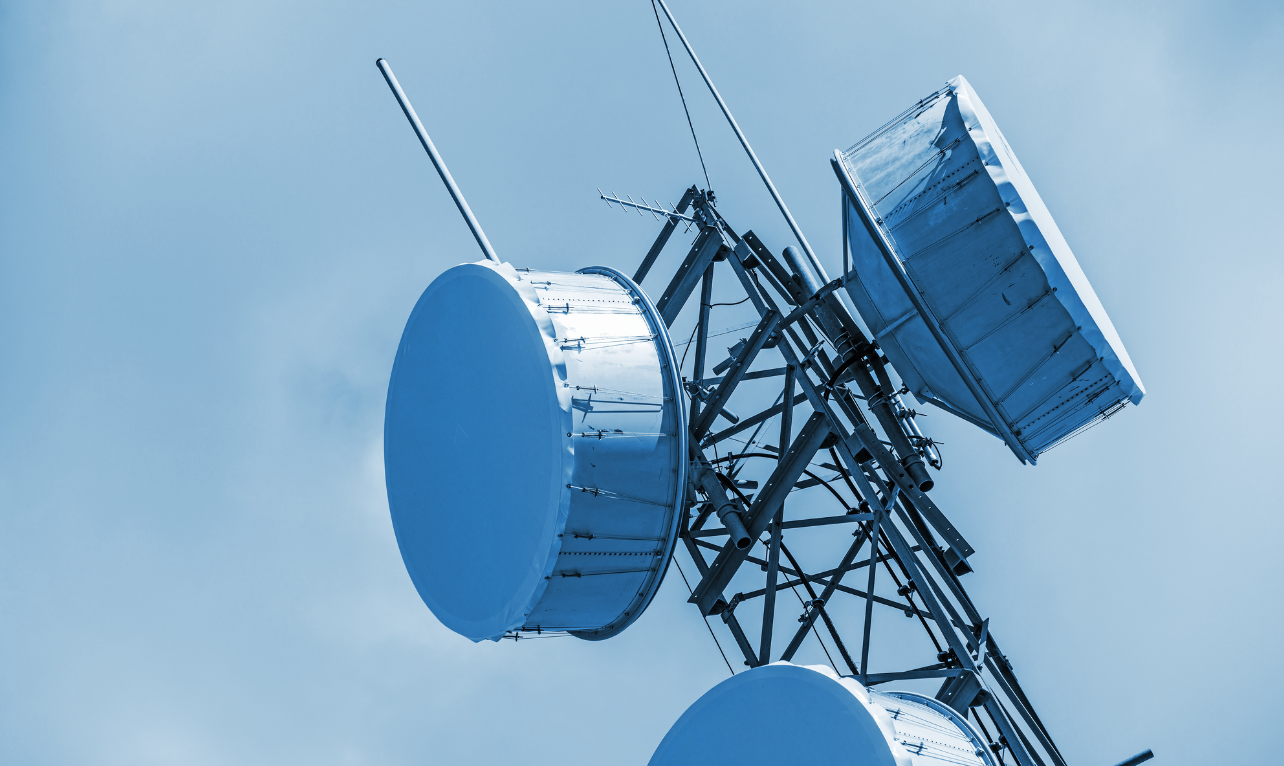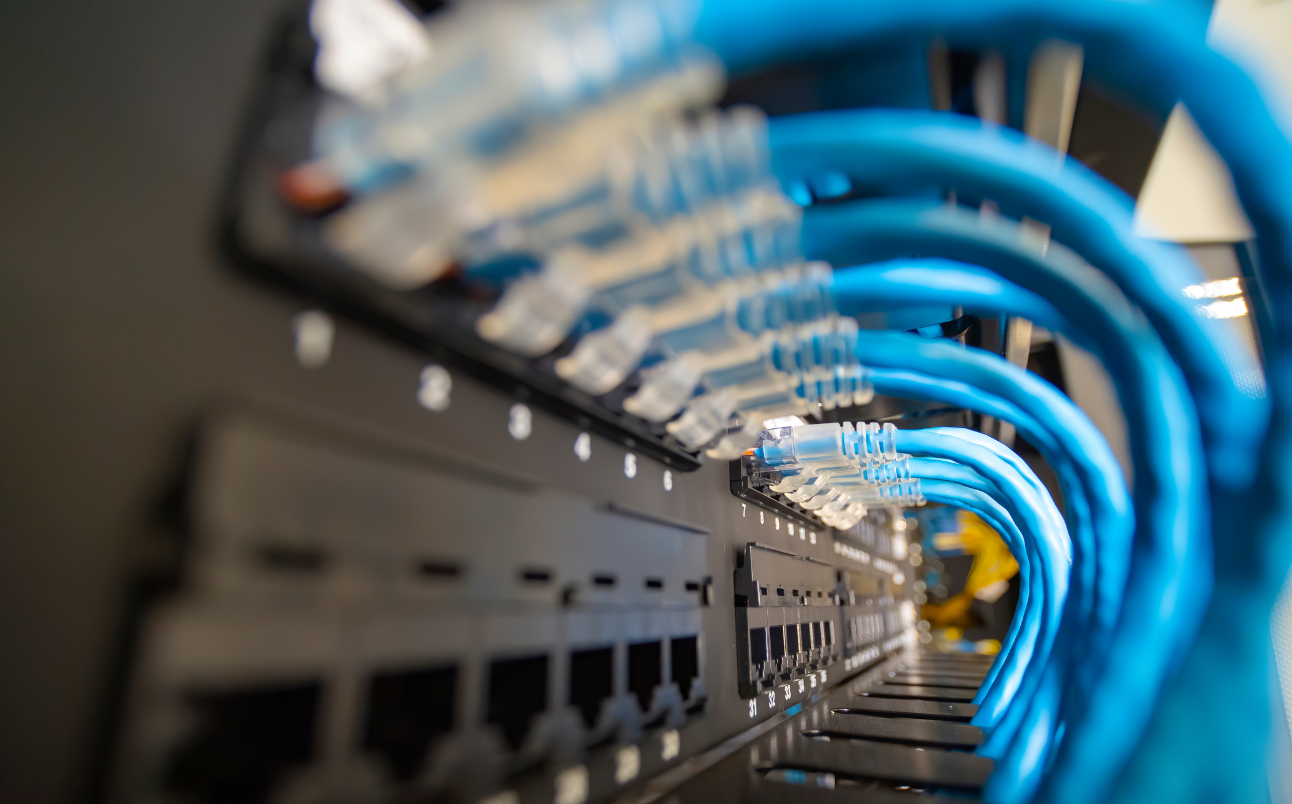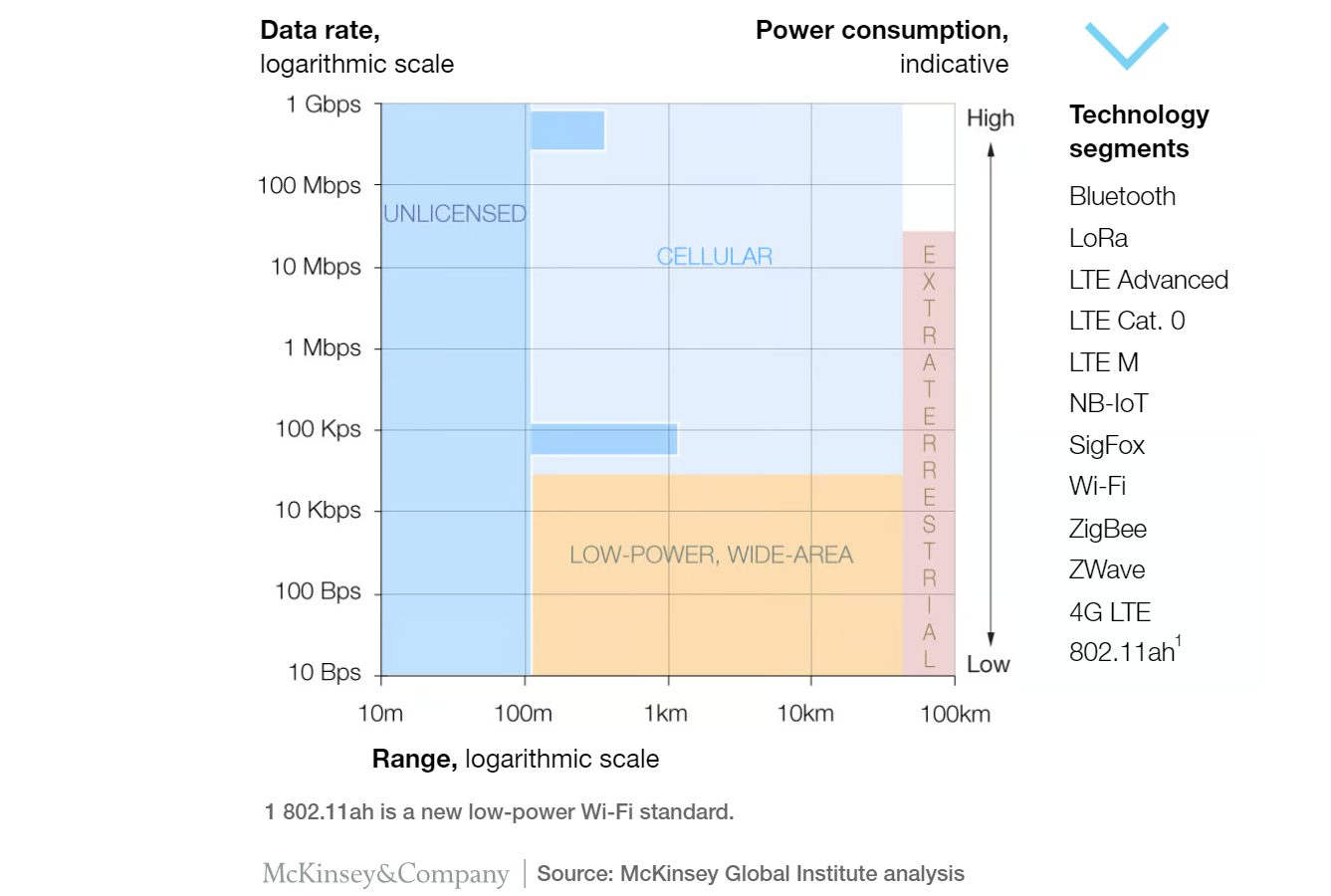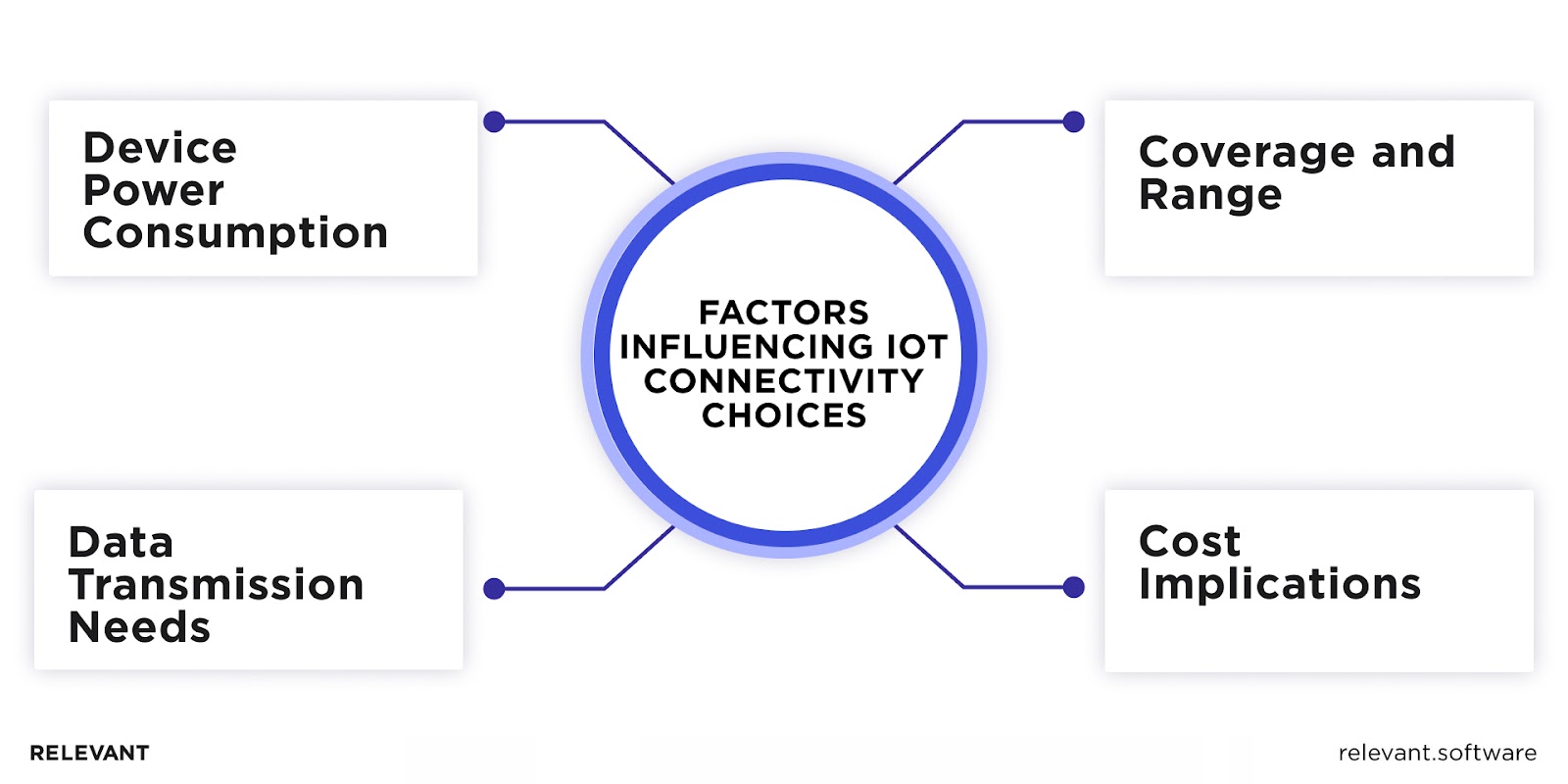IoT Connectivity Technologies: The Go-betweens the “Things”

It seems like everywhere you look, there is “something IoT.” Alarm systems, healthcare devices, smart cars, and factories – the list goes on. Although these systems serve different purposes, they all share one common characteristic: dependence on strong IoT connectivity.
There is a wide range of IoT connectivity options available today, with different bandwidth, range, reliability, network-management features, and cost. Some connectivity solutions were not designed with IoT in mind and have limited use cases. Others have been specifically developed for IoT applications and scenarios.
In this blog, we’ll try to cover the basics of connectivity using our IoT development experience gained through projects such as Sensor Innovation and Airthings.
What is IoT Connectivity?
IoT device connectivity describes technologies and processes by which any IoT object (from an ordinary sensor in a factory to a self-driving car) connects to the other devices, cloud, and integration points such as IoT gateways. IoT connectivity is critical as it helps transmit and receive data and allows devices to perform the functions for which they were designed. With more than 29 billion connections predicted by 2027, IoT connectivity solutions are booming.
Components of IoT Connectivity
| Component | Description |
| Sensors and Devices | Collect data from connected environments for real-time processing. They can be selected or modified depending on the requirements. |
| Connectivity Modules | Connect sensors/devices to the cloud via a gateway/router or connect directly to the Internet. |
| Gateways and Hubs | Filter and aggregate data from multiple devices before sending it to the cloud or a local network. |
| Cloud Platforms | Store and process data gathered by devices. Here, AI algorithms analyze information, generate insights, and trigger actions based on predefined rules. |
| Applications and Interfaces | Developed for IoT connectivity management, apps with interactive dashboards allow to control devices, monitor readings, and receive alerts. |
Your next read – How to build an IoT dashboard
Connectivity requirements for different sectors
When choosing an IoT connection, it is important to know whether your IoT project will involve mobile or fixed assets. The distribution of your devices, such as whether they are close together or scattered, as well as their physical location – indoors, underground, outdoors, etc. – greatly influences your decision-making. Here are some examples of how IoT connections vary across industries:
| Automotive and Industrial | In the automotive sector, where reliability is paramount, networks with low bandwidth and medium-to-long range are most sought after. They are also crucial in the industrial IoT, where devices often operate on low-power global networks. |
| Agriculture | In agriculture, IoT is mainly used to enhance profitability and predict maintenance needs, necessitating networks that are low-bandwidth and short-range. |
| Smart Cities | Smart cities, due to their scale and requirements, need IoT networks that offer longer range, high reliability, and typically low bandwidth |
| Construction | For construction projects, which are generally stationary, a network that is low in bandwidth, short-range, and highly reliable is essential. |
| Utilities | Utility services are spread over vast geographical areas, so they require networks that have long-range and high reliability. |
| Transport and Logistics | In this sector, IoT is primarily employed for tracking and optimizing logistics, demanding networks with long-range and low-bandwidth capabilities. |
| Healthcare | Most healthcare IoT networks require minimal data transmission over short distances with moderate reliability. |
Types of IoT Connectivity Solutions
When contemplating their options for IoT connectivity, businesses have four main categories to select from: cellular, short-range, low power wide area (LPWAN), and satellite.
Cellular Connectivity
With cellular IoT, you don’t have to create new infrastructure for each new deployment—you can connect to an existing network. This is where 4G and 5G are put in, each offering unique benefits for IoT applications.
Faster than 2G and 3G, 4G LTE networks support complex IoT applications, including video and healthcare. Despite the higher power consumption, 4G remains a viable IoT option due to its power-saving features and increased coverage. 5G networks allow more remote processes and promise fast data transfers and efficient use of energy but are currently limited by coverage and cost. Let’s sum up the advantages of cellular communications for the IoT:
- IoT devices stay connected even in remote locations where Wi-Fi may not work well.
- Cellular connectivity works even in harsh environments or densely populated areas.
- It can accommodate many connected devices, making them suitable for large-scale IoT deployment.
These are just a few examples of cellular communications in the IoT:
- Fleet management: Tracking vehicles, monitoring driver behavior, optimizing routes.
- Remote asset tracking: Monitoring pipelines, wind farms, or shipping containers.
- Environmental monitoring: Gathering information about air quality, water levels, or animal populations.
- Healthcare: Remote patient monitoring, connecting ambulances to hospitals.

Low-Power Wide-Area Networks (LPWAN)
Cellular wasn’t built for the IoT explosion. Designed for voice calls, it drains power with constant listening and updates. To cater to billions of low-power devices, cellular providers rolled out LPWANs. They allow IoT devices to transmit or receive updates at fixed intervals or in response to an external trigger (such as a sensor) instead of keeping a constant connection. This drastically decreases power consumption.
The two primary LPWANs for cellular connectivity are NB-IoT and LTE-M. NB-IoT provides long battery life and global connectivity for indoor and smart city applications, while LTE-M provides higher throughput and global coverage for data-intensive IoT uses. By 2026, NB-IoT and LTE-M are projected to encompass more than 60% of the 3.6 billion LPWA network connections.
Among the other leading LPWAN technologies stand LoRaWAN and Sigfox. Both excel at sending tiny data packets over long distances, using minimal power. This makes them suitable for remote sensor monitoring, asset tracking, smart cities, or industrial automation applications. So, the main benefits of the LPWAN are:
- They connect devices over vast distances and are the best for remote locations like farms, forests, or pipelines.
- Devices last for years on batteries, reducing maintenance and costs.
- Networks are inexpensive to deploy and maintain, making them accessible for wider applications.
- Handle large numbers of devices efficiently, which is perfect for large-scale deployments.
- Reach areas are often out of range for traditional networks, enabling broader connectivity.
LPWAN empowers applications like:
- Remote sensor monitoring (environment, agriculture, infrastructure).
- Asset tracking (vehicles, containers, livestock).
- Smart cities (air quality, waste management, parking).
- Industrial automation (pipelines, wind farms, power grids).
Short-Range Connectivity
While cellular networks dominate wide-area connections, the ecosystem of IoT thrives on short-range communication. According to IoT Analytics, Wi-Fi, or Wireless Fidelity, is used in 31% of IoT connections, enabling devices to transmit data over the Internet wirelessly.
Bluetooth allows for the transfer of data over short distances between stationary and portable devices through UHF radio waves in the 2.402-2.48 GHz spectrum, forming personal area networks, but is limited to short-range use. Bluetooth Low Energy (BLE) caters to sectors like healthcare and home entertainment. It operates independently from traditional Bluetooth, offering a similar range but with lower power consumption.
Zigbee, another mesh protocol, forms personal area networks using small, low-power radios suitable for home automation and medical data collection. It operates within 10-100 meters to minimize power use, with a 250 Kbps data rate that suits sporadic data transmission. Let’s look at the advantages of short-range connections:
- With its low power consumption, battery-powered devices significantly extend their service life.
- Short-range technologies provide strong encryption to protect data from interception.
- Easy pairing and setup make these networks easy to use with everyday devices.
Short-range connectivity enables applications like:
- Smart Homes: Connecting devices like thermostats, lights, and speakers.
- Wearables: Transferring health data from fitness trackers to phones.
- Industrial Automation: Sensors communicating with controllers in factories.
- Personal Area Networks: Sharing files between devices directly.

Satellite Connectivity
While cellular networks and short-range technologies dominate most of the connected world, there are vast stretches where landlines and Wi-Fi falter. This is where satellite connectivity brings the power of IoT even to the most isolated corners of the globe.
Satellites offer connectivity virtually anywhere, making them suitable for environmental monitoring, disaster response, and tracking assets in remote locations. It can also be used as a hybrid model, a backup in case terrestrial IoT connectivity services fail. Let’s pack up the advantages of satellite connectivity:
- It offers reliable connectivity in the most remote and rugged locations.
- Networks can handle a large number of devices efficiently, suitable for large-scale IoT deployments.
- 4G and 5G enable instantaneous data transfer, which is critical for remote monitoring and control applications.
- Supports various device types and data volumes, adapting to diverse IoT applications.
Here are some key applications empowered by satellite connectivity:
- Industrial automation: Connecting remote industrial sites and infrastructure for data collection, control, and maintenance.
- Remote asset management: Monitoring pipelines, wind farms, and other critical infrastructure in far-flung locations.
- Maritime and aeronautical communication: Enabling communication for ships and aircraft on the high seas or in remote airspace.

Factors Influencing IoT Connectivity Choices
The main requirements for any smart enterprise looking into IoT device connectivity technologies are coverage, energy efficiency, data transmission needs, and surely cost. These play a determining role in choosing how to connect to your IoT system. So, let’s look at the details of the most important criteria:

Device Power Consumption
Power efficiency is crucial for applications like wearable devices, remote sensors, and asset trackers. You need a technology that balances connectivity IoT with battery life to avoid frequent charging or premature device replacements.
Considerations: Cellular connectivity, while offering wide coverage, can be a power hog. Wi-Fi and Bluetooth, while faster than Zigbee, drain batteries quicker. Technologies like NB-IoT and LoRaWAN excel at low power consumption, making them ideal for long-life sensors and remote devices.
Data Transmission Needs
Latency and the delay in data transmission also matter. Real-time applications like industrial control require minimal latency, while home automation can tolerate slight delays. You need a technology that meets your latency needs to avoid sluggish performance or compromised control.
Considerations: Wi-Fi and cellular networks offer high speeds for large data transfers, while Zigbee and Bluetooth are perfect for smaller, occasional bursts.
Coverage and Range
Do your devices need to talk across continents or just within your living room? You must understand your project’s requirements and whether it needs long or short-range connectivity IoT solutions.
Considerations: If wide area coverage is crucial, cellular or satellite might be the answer. For localized connections within buildings or specific areas, Wi-Fi, Bluetooth, or Zigbee could be more efficient.
Cost Implications
Connectivity comes with a price tag. For example, сellular plans can be expensive, while Wi-Fi and Bluetooth might require additional infrastructure investments like routers. Low-power technologies like NB-IoT often have lower upfront costs but might have subscription fees.
Considerations: Evaluate both initial investment and long-term operational expenses and weigh the cost of connectivity against the value it brings to your application. As a result, you can choose a technology that fits your budget without compromising performance or functionality.

Challenges in IoT Connectivity
While the Internet of Things promises a connected future, it also faces several challenges in achieving seamless connectivity. Here are some key concerns:
Interference and Congestion
As the number of connected devices explodes, the limited spectrum gets jammed, causing:
- Signals overlap, corrupting data and hindering performance.
- Data transmission slows down significantly.
Strategies to Mitigate
- Technologies like Wi-Fi and Bluetooth employ dynamic channel switching to avoid interference.
- Dividing devices into smaller networks can ease congestion and improve performance.
- Methods such as Orthogonal Frequency-Division Multiplexing (OFDM) can effectively use bandwidth and minimize interference.
Security Concerns
IoT networks are especially vulnerable to cyber risks because of their network structure, high data amounts, and dispersed character. Vulnerabilities in protocols, firmware, and software can lead to challenges like:
- Sensitive information like sensor data or personal details can be stolen.
- Hackers can overwhelm devices or networks, disrupting operations and causing widespread outages.
- Compromised devices can be used to launch coordinated attacks on other systems.
Measures to Enhance Security
- Secure protocols and encryption algorithms protect data in transit and at rest.
- Patching vulnerabilities and keeping software up-to-date is essential to mitigate security risks.
- Implementing robust authentication and authorization mechanisms in IoT architecture ensures that only authorized devices can access the network.
- Educating users and developers about best practices in IoT security is vital for building a secure ecosystem.
Your next read – Internet of Things (IoT) Testing: Why Is It So Important?
Scalability Issues
With the surge in connected devices, existing solutions may face challenges in managing the escalated workload. Therefore:
- Existing infrastructure might be unable to handle the massive data traffic of millions of devices.
- Managing and configuring a vast number of devices can become complex and time-consuming.
- Different devices and protocols might not work seamlessly together, creating compatibility issues.
Solutions for Scalability
- Utilizing cloud platforms can provide scalability and flexibility to manage even large-scale deployments.
- Processing data closer to the source, at the network’s edge, can minimize delays and enhance effectiveness.
- Promoting open standards and interoperable protocols can simplify device integration and management.
Addressing these connectivity issues is essential for the Internet of Things to deliver reliable connectivity and performance.
IoT Connectivity: Final words
Choosing the proper connection type for your IoT project is crucial to realizing your concept. But that is not all. You also need the most robust, dependable, and safe IoT connectivity management platform. To develop it, you can hire IoT developers at Relevant Software. Regardless of the size or phase of your IoT deployment, we minimize the expenses associated with managing your connectivity ecosystem.
To learn more about our expertise, review our IoT case studies or send us a request. An IoT expert from our team will promptly connect with you to discuss your specific needs.



